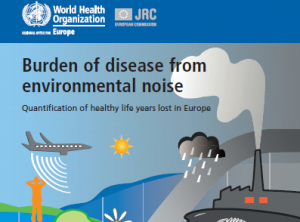 A World Health Organization report finds Western Europeans lose years to death or disability from excessive sound. Though European countries have taken steps to turn the volume down, the U.S. backed off the effort decades ago.
A World Health Organization report finds Western Europeans lose years to death or disability from excessive sound. Though European countries have taken steps to turn the volume down, the U.S. backed off the effort decades ago.
In the report WHO researcher Rokho Kim says that across an estimated population of 340 million people, at least 1 million years of healthy living are lost each year due to noise pollution in Western Europe.
Source: npr
Reasearch article PDF available here
Abstract
The health impacts of environmental noise are a growing concern among both the general public and policy-makers in Europe. This publication was prepared by experts in working groups convened by the WHO Regional Office for Europe to provide technical support to policy-makers and their advisers in the quantitative risk assessment of environmental noise, using evidence and data available in Europe.
The chapters contain the summary of synthesized reviews of evidence on the relationship between environmental noise and specific health effects, including cardiovascular disease, cognitive impairment, sleep disturbance and tinnitus. A chapter on annoyance is also included. For each outcome, the environmental burden of disease methodology, based on exposure–response relationship, exposure distribution, background prevalence of disease and disability weights of the outcome, is applied to calculate the burden of disease in terms of disability-adjusted life-years (DALYs). With conservative assumptions applied to the calculation methods, it is estimated that DALYs lost from environmental noise are 61 000 years for ischaemic heart disease, 45 000 years for cognitive impairment of children, 903 000 years for sleep disturbance, 22 000 years for tinnitus and 587 000 years for annoyance in the European Union Member States and other western European countries.
These results indicate that at least one million healthy life years are lost every year from trafficrelated noise in the western part of Europe. Sleep disturbance and annoyance, mostly related to road traffic noise, comprise the main burden of environmental noise. Owing to a lack of exposure data in south-east Europe and the newly independent states, it was not possible to estimate the disease burden in the whole of the WHO European Region. The procedure of estimating burdens related to environmental noise exposure presented here can be used by international, national and local authorities as long as the assumptions, limitations and uncertainties reported in this publication are carefully taken into account.




